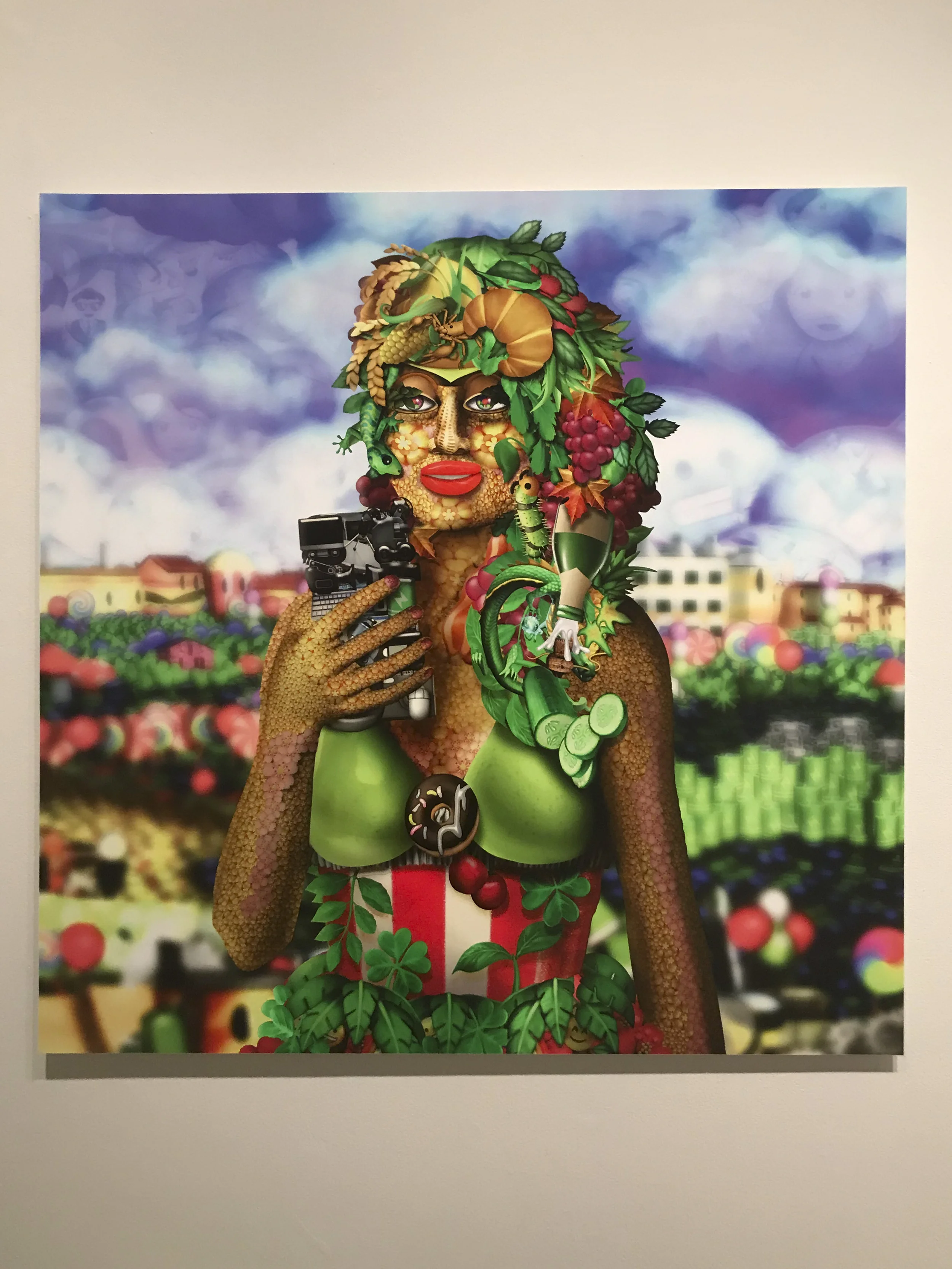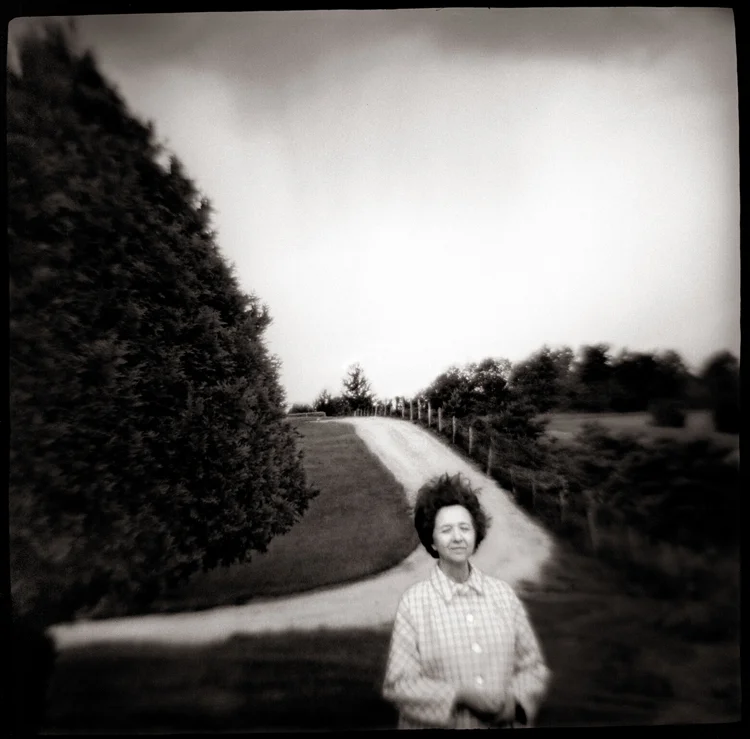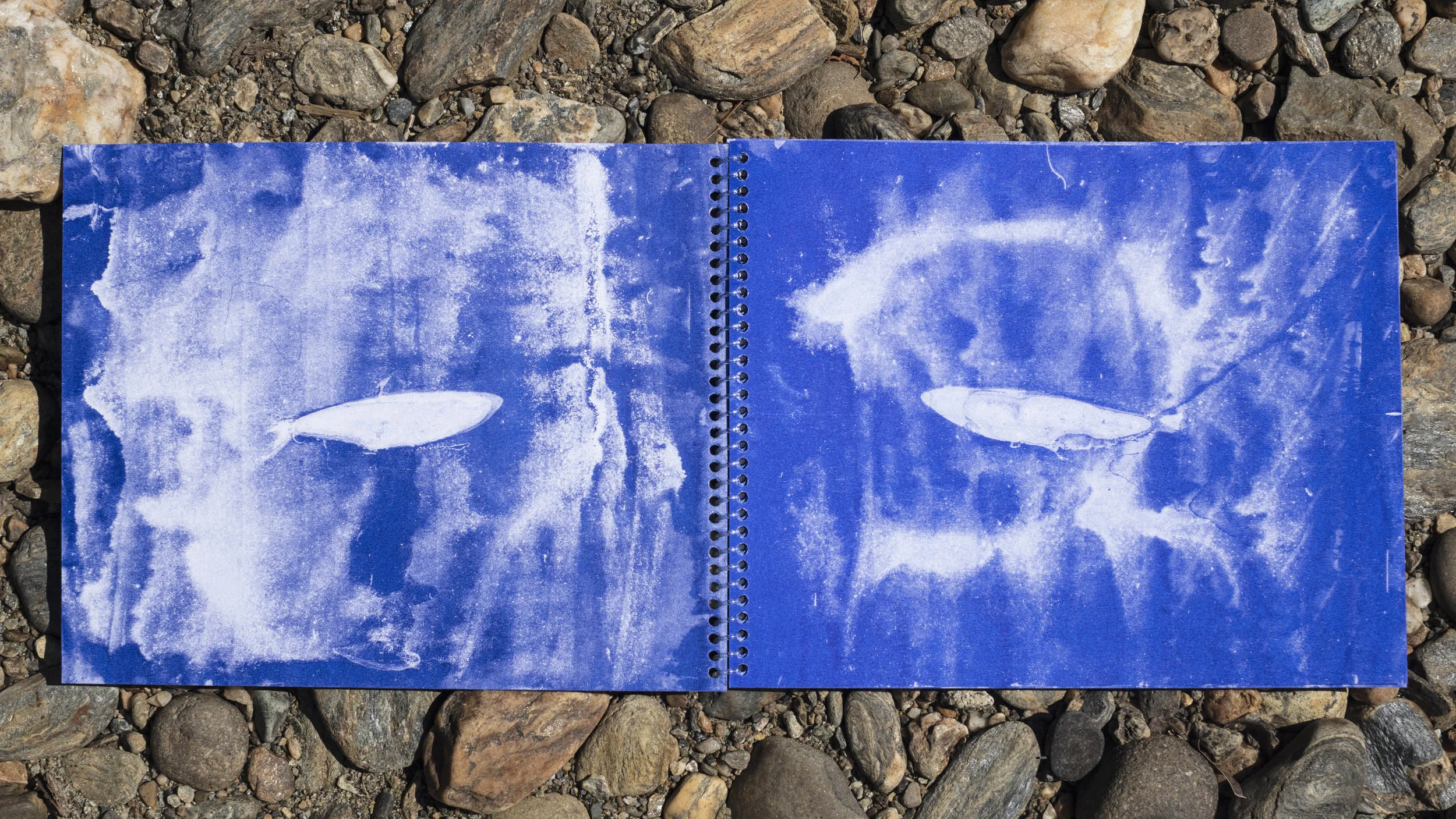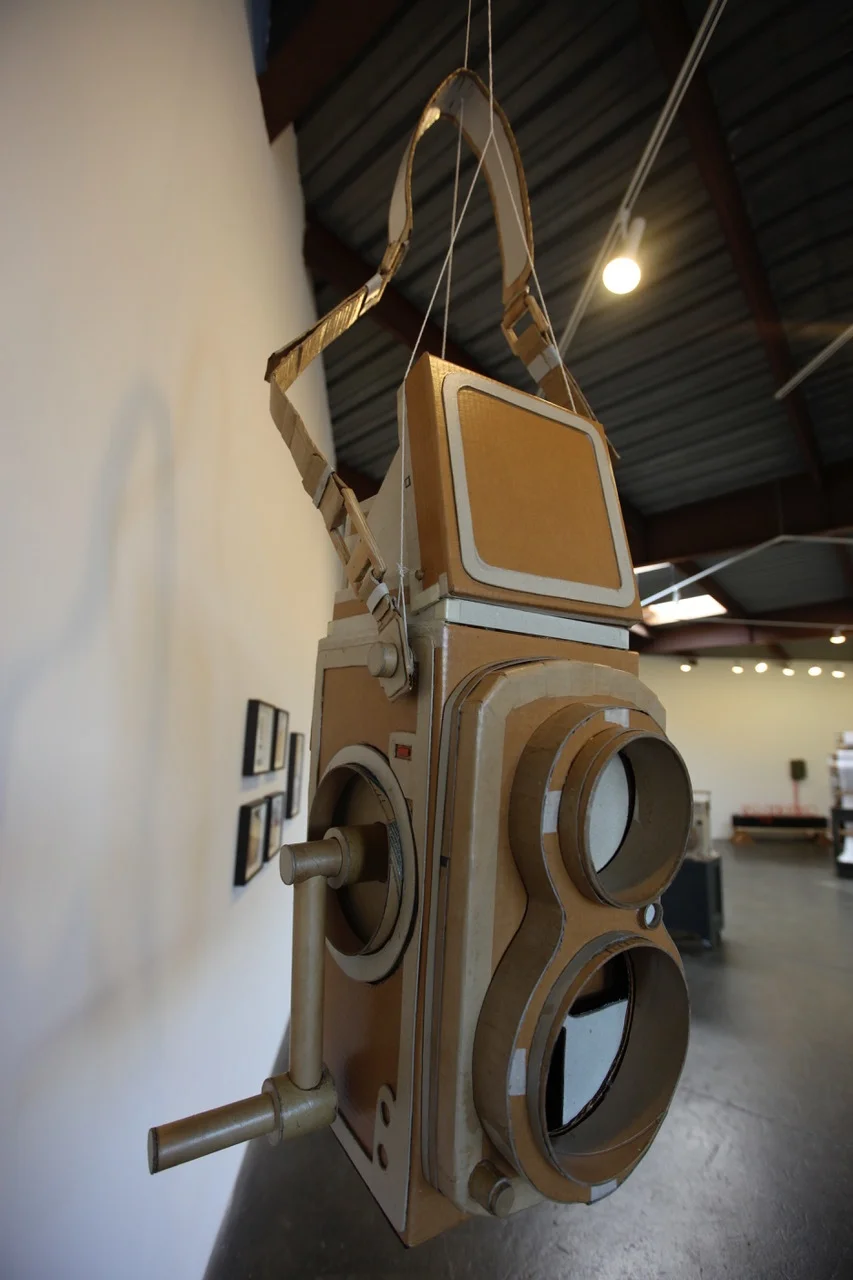Small Island, Big Picture
Monograph by Alexandra de Steiguer
Each month, Don't Take Pictures releases an exclusive edition run of a photograph by an artist featured in our print magazine. Each image is printed by the artist, signed, numbered, and priced below $200.
We believe in the power of affordable art, and we believe in helping artists sustain their careers. The full amount of the sale goes to the artist.
We are pleased to release December's print, Looking Seaward: Self-portrait from Alexandra de Steiguer as well as a signed copy of her monograph, Small Island, Big Picture. Read more about de Steiguer's work below.
Purchase this print + book package from our print sale page.
Looking Seaward: Self-portrait
6 x 9, signed and numbered open edition
Silver gelatin print
17 Winters: The Photographs of Alexandra de Steiguer
Island living is often viewed as exotic and luxurious. Movies depict the lifestyle as idyllic, with palm trees, warm sands, and friendly neighbors. Imagine instead stepping off of a boat, alone, onto a snow-covered island in the North Atlantic Ocean. The sand is sharp and frozen, there are no palm trees, and the only neighbors are birds and seals. Alexandra de Steiguer has lived this kind of island life for the past 17 winters. Her black and white photographs portray her unique perspective of the Isles of Shoals in their dormant state. Through her lens, she documents the wild and harsh surroundings, and examines her place within them.
De Steiguer’s first roll of black and white film was shot and developed in the forecastle of a tall ship off the coast of Spain. After a career as a deckhand aboard various tall ships, she toured the marine research facility and summer homes on the Isles of Shoals; nine small islands off the coast of New Hampshire and Maine. “The islands have a certain wildness about them, so it felt a bit like entering an older and more rugged world—which is also how sailing a tall ship can feel—and so I was instantly intrigued.” That fascination landed her the job of winter caretaker on the spot. Now 17 seasons later, she cannot foresee a time when she would want to spend her winters anywhere but on “these wild and lonely islands.”
Until a dry well several summers ago tainted the water with salt, de Steiguer developed her film on the island. Now she waits until her return to the mainland in the spring to print in her studio darkroom. In this digital age, it may seem impossible to wait five months to see one’s photographs, but the delayed gratification suits de Steiguer’s lifestyle. Printing by hand in traditional silver gelatin methods, the darkroom allows her the solitude she has become accustomed to. Alone with her film and chemistry, de Steiguer is able to spend the summer months reliving the experiences of her beloved winter home.
Having spent 17 seasons with only the islands and their wildlife for company, de Steiguer’s photographs are deeply personal. Her familiarity with the terrain and geography allows her to photograph the islands in such an intimate way that they become a character in her story. Blending the genres of landscape and figurative work, de Steiguer shows her relationship to the environment. Wind blows through sea grass like it blows through her hair, and a fragment of washed-up driftwood looks like it could be de Steiguer herself, succumb to the sea.
A self-professed “wanton and unreformed romantic,” de Steiguer’s island living is as far from a cinematic tropical paradise as it gets. Her photographs romanticize the rugged ideal of a life surrounded by water, glorifying the hard winters of New England. The figurative images, mostly self-portraits, show a lone person in quiet contemplation. Using herself as a stand-in, de Steiguer becomes an “every-man,” devoid of any particular identity or time period. Often depicted looking out towards the horizon, the figure in these tableaus feels small against the expansiveness of the sea. Photographed near the centuries-old buildings and in non-descript dress, de Steiguer shows that her contemporary lifestyle is not so different from how living on the Isles of Shoals would have been 100 years ago.
“[A]s a species, we used to be wild and free—like the animals I see every day among the islands, but in general, you can say that we’ve traded all that for something lesser… we’ve developed fairly rigid systems in which to live. But it’s still out there—the “wild life”—and we can still touch it sometimes, briefly, and we can still hear its call, and in some places we can see it all around us.”
Years ago, caretakers would keep a logbook of the island’s activities, which over time would tell the story of how the island had changed and been shaped by nature. De Steiguer’s photographs as winter resident have been exhibited extensively throughout New England, earning her two Artist Fellowships from the New Hampshire State Council for the Arts. They have also recently been published in her first monograph, Small Island, Big Picture. Presenting 69 images along with her writings, the book serves as its own log of de Steiguer’s time on the Isles of Shoals. As viewers, we experience the islands as she does; through times of harsh weather, rare calm, and faint glimpses of the beginnings of spring.
We are privy to de Steiguer’s world, but only during waking hours. At dusk she retires her camera, sparking questions about the islands at night. We are left to wonder how the night sky looks without light pollution from the mainland and where the birds return to roost at dusk. As the sole witness to winter on the Isles of Shoals, these images provide the only records of the off-season before the summer visitors arrive.
The photographs, while devoid of color, are rich in contrast, emphasizing the stark landscape’s bleak sky and sea. The landscapes are often sparse and carefully composed. The roughness of the land becomes more apparent in black and white. Her moody printing enhances the textures of the sea grasses, rocks, and salt spray. To give a sense of space, de Steiguer cleverly incorporates the coastline as a perimeter and a barrier. We can sometimes see other islands in the distance, or ships through the fog, but the unfriendly water and edges of rock remind us of her confinement to the small islands.
Like her occupation, de Steiguer’s photographs transcend a specific time period, and focus instead on place. Though the boundaries of the Isles of Shoals keep her isolated, de Steiguer is not so much a castaway as an explorer. She uses her camera to observe and record weather conditions, tides, and structures, sometimes placing herself into the frame to say, “someone was here.” While disconnected from the busy life of the mainland, Alexandra de Steiguer has instead found a rich connection to her solitary environment offshore.
This article first appeared in Issue 3.
Kat Kiernan is a native New Englander who has sailed the Maine coast and is the Editor-and-Chief of Don’t Take Pictures.






































































































































































































